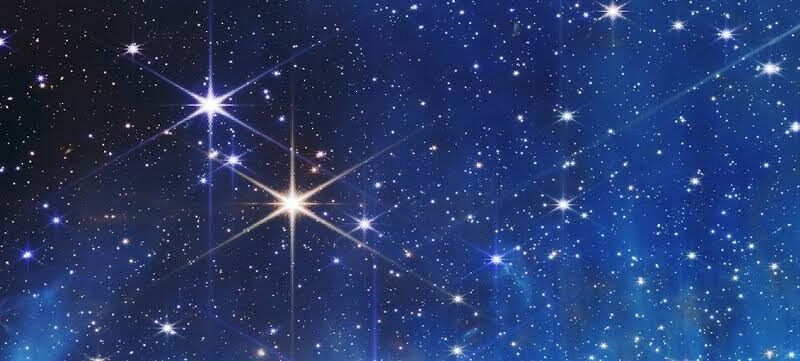Stars have always captivated humanity, serving as celestial beacons and subjects of scientific wonder. Among these, Stars-923 have garnered attention for their unique characteristics and the role they play in expanding our understanding of the cosmos. This guide explores everything from the formation of Stars-923 to their cultural and scientific significance.
Introduction
Stars-923 are a fascinating category of celestial bodies that not only light up the sky but also serve as keys to unraveling the mysteries of the universe. From their formation to their death, Stars-923 reveal the complex processes that govern stellar life cycles and the broader structure of the galaxy.
What Are Stars-923?
Stars-923 represent a specific class of stars, remarkable for their diversity and ability to shine brightly. While “Stars-923” might symbolize a unique classification or cosmic phenomenon, these stars possess distinct traits that make them pivotal in astronomical studies. Their study helps scientists understand various types of stars and their behavior across the universe.
The Birth of Stars-923
Stars-923 form in stellar nurseries—vast regions of gas and dust where gravity condenses matter into dense clumps called protostars. Over time, these protostars accumulate mass and initiate nuclear fusion, the process that powers stars by combining hydrogen atoms to form helium. This process produces the energy that allows Stars-923 to shine throughout their lifetimes.
Stellar Nurseries
Stellar nurseries, rich in raw materials, provide the perfect environment for star formation. As gravity pulls the gas and dust together, protostars evolve into fully developed stars.
The Process of Nuclear Fusion
At the core of every Stars-923 lies nuclear fusion, the key engine behind its brilliance. The balance between gravity’s inward pull and the outward pressure of radiation keeps Stars-923 stable for millions to billions of years.
Classifying Stars-923
Stars-923 can be classified into several categories based on their size, temperature, and spectral properties. The most common types include:
- Main Sequence Stars: These stars, like the Sun, burn hydrogen in their cores.
- Giants: Larger, more luminous stars that have expanded in size as they age.
- Dwarfs: Smaller, cooler stars that have entered the final stages of their life cycle.
Red Giants and Stars-923
As Stars-923 exhaust their hydrogen, they transition into red giants, expanding in size as their outer layers swell. This marks the beginning of the final stages of their life cycle.
The Death of Stars-923
The end of Stars-923 depends on their mass. Smaller stars become white dwarfs, slowly cooling remnants of their former selves, while larger stars may end in supernova explosions, leading to the formation of neutron stars or black holes.
White Dwarfs
When smaller Stars-923 finish burning their nuclear fuel, they shed their outer layers, leaving behind a dense core—a white dwarf. This remnant continues to radiate heat for billions of years.
Neutron Stars and Black Holes
For massive Stars-923, their final act is often a spectacular supernova, leaving behind either a neutron star—an incredibly dense stellar remnant—or a black hole, where gravity is so intense that not even light can escape.
Stars-923 in the Galaxy
Stars-923 play an essential role in the structure and evolution of galaxies. Their deaths, through supernova explosions, disperse heavy elements like carbon, oxygen, and iron, which are critical for forming new stars and planets.
Elements Created by Stars-923
Stars-923 are the cosmic forges responsible for creating most elements heavier than hydrogen and helium. Through nuclear fusion and explosive supernova events, they distribute the building blocks necessary for planetary formation and life.
Observing Stars-923
Astronomers use telescopes and spectroscopy to observe and study the properties of Stars-923. By analyzing the light emitted by these stars, scientists can learn about their composition, temperature, and motion.
Telescopes and Spectroscopy
Ground-based and space-based telescopes, such as the Hubble Space Telescope, offer detailed views of Stars-923. Spectroscopy allows scientists to analyze the light spectrum, revealing vital information about a star’s physical characteristics.
Cultural Significance of Stars-923
Throughout history, stars like Stars-923 have inspired mythology, navigation, and artistic expression. From ancient sailors navigating by starlight to their symbolic presence in literature, stars hold deep cultural importance.
Stars-923 in Mythology and Navigation
Many cultures have incorporated stars into their mythologies, often as gods or guiding spirits. For early sailors, stars were essential for navigation, offering a reliable means of determining their position at sea.
Stars-923 in Art and Literature
From Van Gogh’s “Starry Night” to poetic representations of the cosmos, stars have long been a source of artistic inspiration. Their presence in art and literature reflects humanity’s awe and fascination with the night sky.
Future Frontiers in Astronomy
As technology advances, astronomers continue to explore the cosmos, unlocking new mysteries surrounding Stars-923. The discovery of exoplanets and the detection of gravitational waves are just two areas where the study of stars is yielding groundbreaking insights.
Exoplanet Discoveries and Gravitational Waves
Exoplanet research focuses on finding planets orbiting stars like Stars-923, many of which may harbor conditions for life. Gravitational waves, ripples in space-time, provide new ways to study massive stellar events like black hole mergers.
The Impact of Stars-923 on Planetary Systems
Stars-923 significantly impact the formation and evolution of planetary systems. Their gravity influences the orbits of surrounding planets, and their energy determines the conditions that might allow life to exist.
The Search for Life Around Stars-923
Scientists are particularly interested in habitable zones—regions around Stars-923 where conditions may allow liquid water to exist, a key ingredient for life.
Conclusion
Stars-923 are essential to understanding the universe. From their role in shaping galaxies to inspiring human culture, their study offers both scientific insights and a deeper appreciation of the cosmos. As astronomers continue to explore these stellar bodies, each discovery brings us closer to unraveling the mysteries of the universe and our place within it.
